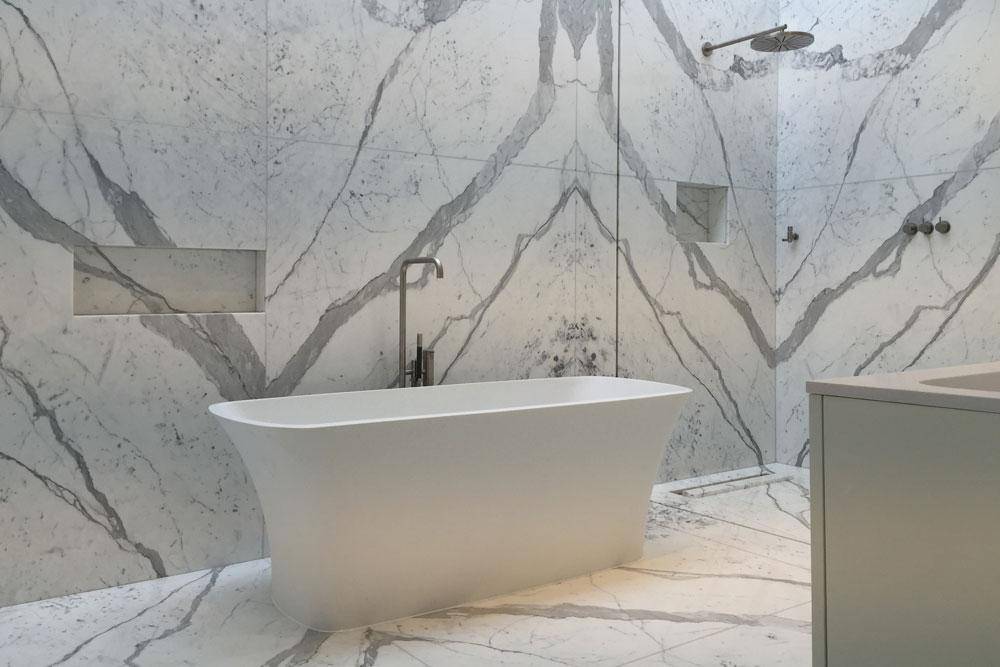The tiling sector is almost full to bursting with product launches, The Stone Federation says, all claiming to be the next big thing. There is one material, however, that has stood the test of time and been a consistently popular choice with clients and specifiers alike throughout the different interior design trends: natural stone.
Natural stone not only delivers attractive, durable projects, the federation says, it’s also the original sustainable material choice for tiling projects.
As the industry has become increasingly aware that a business as usual approach to the carbon impacts of design and construction is no longer an option, there is a fresh drive to consider and reduce the whole-life carbon impacts of projects.
In short, whole-life carbon evaluates both embodied carbon and operational (in-use) carbon. This includes material extraction or creation and transport as well as lifetime emissions from maintenance, repair, replacement, and disposal of the materials.
For clients looking to select materials that minimise carbon impact, natural stone can deliver sustainability in both its extraction and whole-life value, and is ultimately a more cost-effective solution.
There have been several studies comparing the whole-life carbon impact of different construction materials including natural stone. One of these research projects compared the life-cycle assessments of various different materials used for flooring.
When comparing the global warming potential (GWP) of natural stone tiles with ceramic, parquet, large-format ceramics, PVC, laminate, and carpet alternatives, natural stone was reportedly the best performer by a clear margin.
The study, carried out by the German Natural Stone Association, found that when comparing the Global Warming Potential of coverings used for the highest performance floors, large-format ceramic tiles have a 74% higher GWP than natural stone tiles and terrazzo a 24% higher result than its natural stone counterpart.
The Green Guide to Specification, part of BREEAM, sets out an A+ to E ranking system for the environmental performance of a material. Factors evaluated include climate change, mineral resource extraction, waste disposal, and fossil fuel depletion. In a case study project carried out by the Building Research Establishment (BRE), almost half of all natural stone related components achieved either an A+ or A rating, with the majority of the remainder scoring C or above.
15 Clerkenwell Close is a project that has garnered much press attention, the federation says, due in part to its “boundary-pushing” design. While the design was a major talking point, perhaps even more significant was the example it provided of the carbon benefits of using natural stone. By choosing stone, project architect Amin Taha reportedly reduced the embodied carbon of the structure by 90% and lowered the price by 25% compared to typical steel or concrete frames.
There is an increasing awareness among specifiers that materials must earn their place on a specification, and in light of the results shown, natural stone is definitely justifying its inclusion.
While many tiling products are marketed as stone-effect, these products cannot emulate the sustainability credentials of natural stone. “Natural stone is, by definition, a natural product, formed in the earth over many thousands of years,” the company points out.
As the trade association for the natural stone sector, Stone Federation is positioned to help suppliers and clients explore the sustainability potential of natural stone and to deliver the technical and design expertise to take full advantage of its potential.
www.stonefed.org.uk
[email protected]









